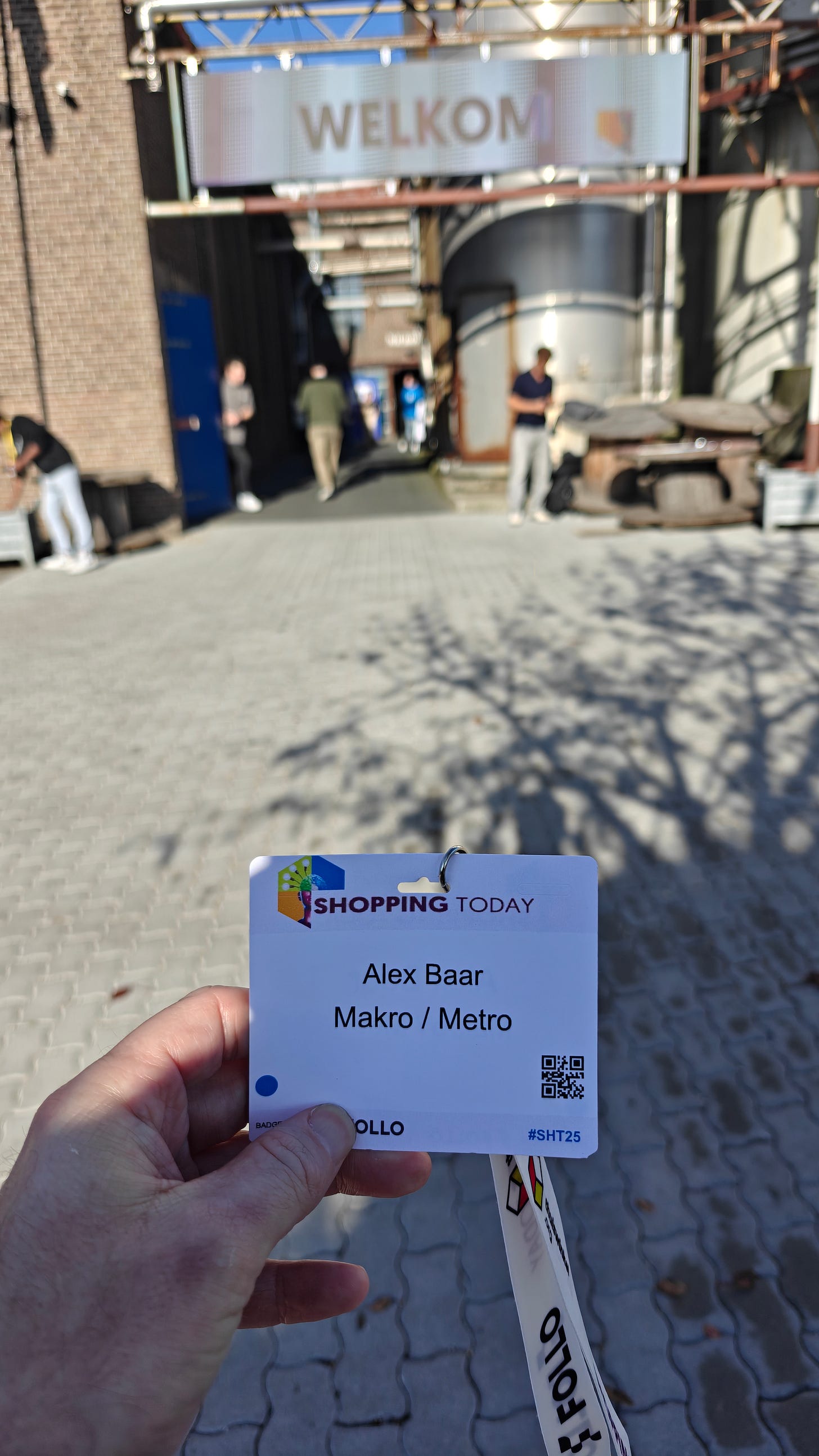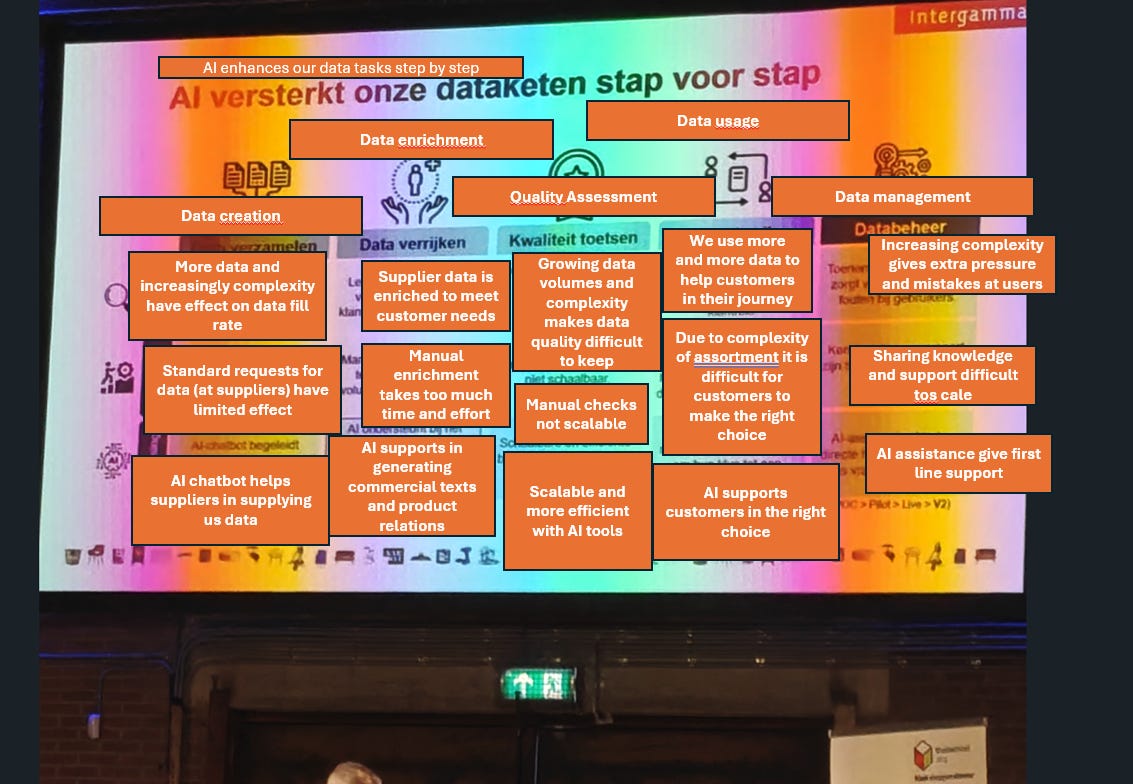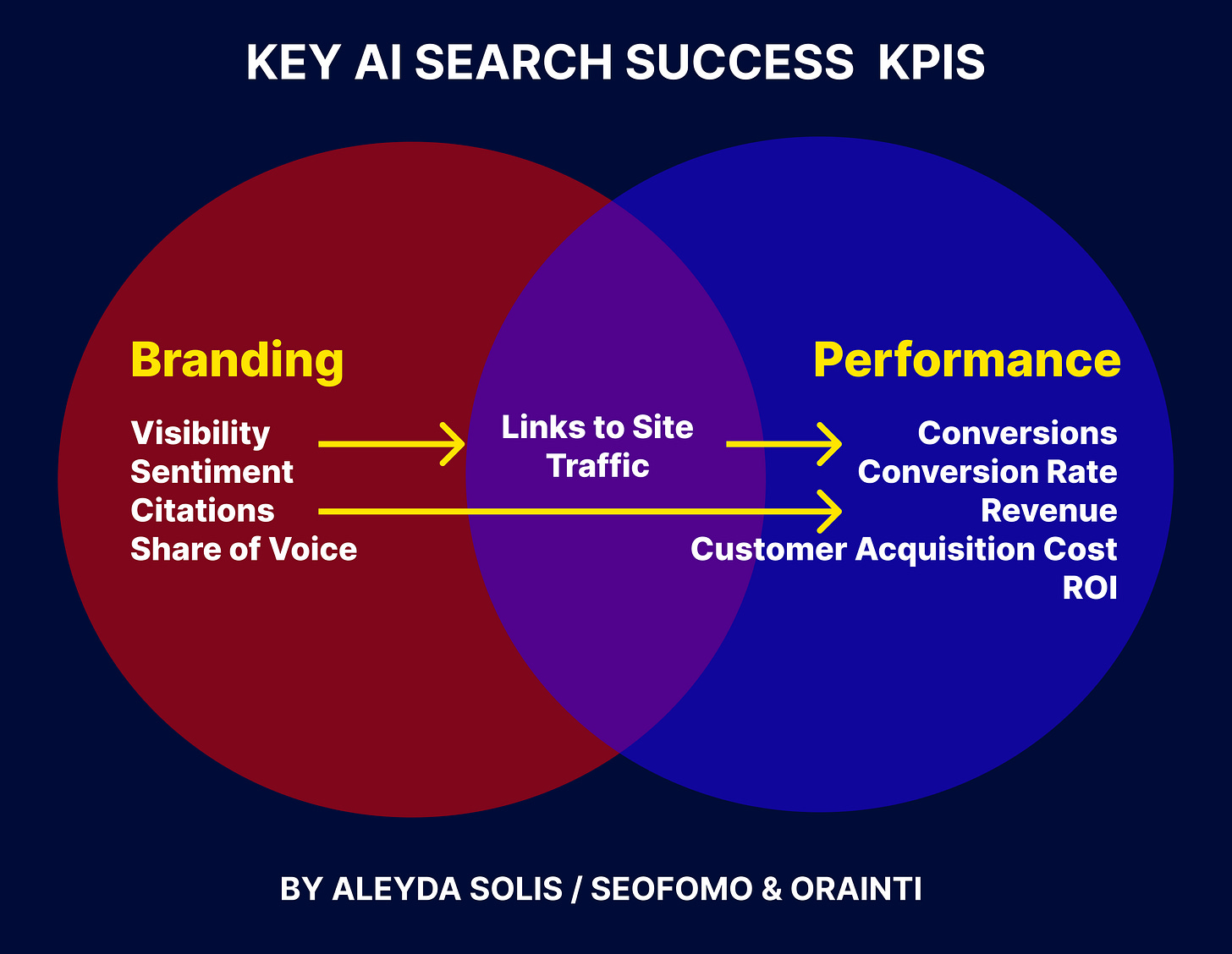Global Digital Marketing & Retail by Alex 111
Inspiration from across the world for retail enthusiasts, e-commerce professionals, marketing lovers and technology fans. Welcome back! I summarized some great links again, I stumbled upon this week.
Good morning!! This week I was at a large conference in the Netherlands, so I do like to share a few takeouts from there in this newsletter. Next to that, regular international marketing and e-commerce news.
🇳🇱 Shopping Today event (1) : what BOL. did with Calex
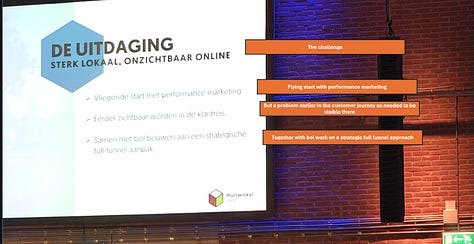
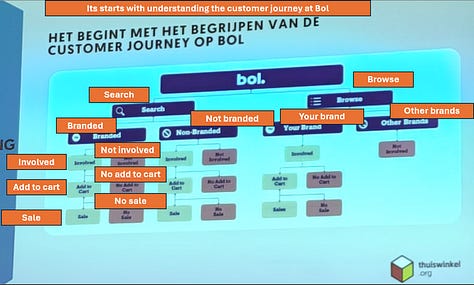
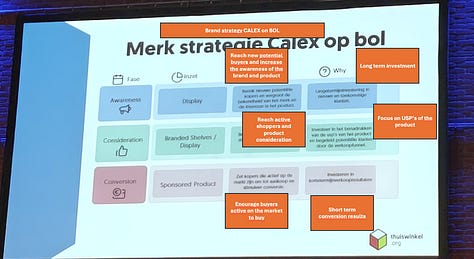
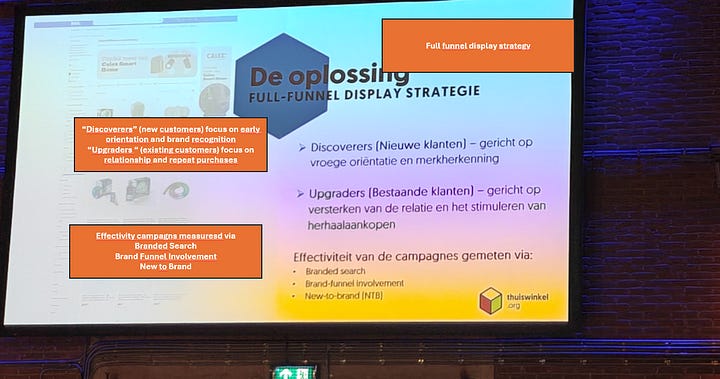
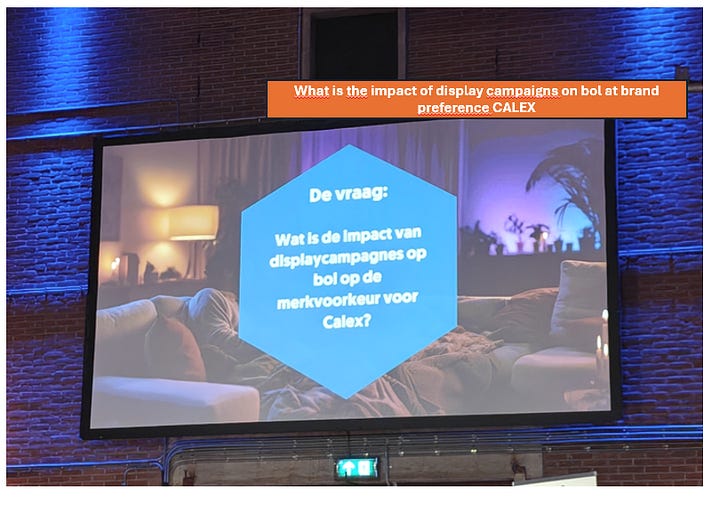
Let’s start with this presentation from the conference. Bol, is the largest marketplace in the Netherlands. They sell almost everything. One of the elements Bol tries to stand out with is “seller contact” and “seller service”. I always think this is an interesting topic, so I decided to go to this session. Calex is a not so known brand. They do sell a lot in physical stores but not so much online. That my friends, they wanted to change and Bol actively helped with that.
Main question/problem statement: “How can a brand that’s strong in physical retail but weak online grow demand and sales on bol by balancing branding and performance, measured by increases in branded search, funnel involvement (PDP→ATC→Orders), and new-to-brand customers?”
What I see in general, is a shift to “performance branding” and platforms like Bol can be a very useful way to do that. Take a look at the pictures for more details on this presentation.
What they did & measured
Ran two complementary campaigns: Discoverers (new shoppers; early recognition) and Upgraders (existing shoppers; repeat).
Judged success on three metrics (not just ROAS): Branded Search, Brand-Funnel Involvement, New-to-Brand (NTB).
Results
+33% branded search for “Calex” in ~1 year (LED strips biggest lift; bulbs +11%).
Brand-funnel involvement up: +166% (LED strips), +39% (bulbs), with PDP views +11%, ATC +1.5%, orders +2.1%.
NTB growth: +6% NTB clicks, +19% NTB ATC, +18% NTB sales, so they didn’t just reach new shoppers, they converted them.
Organizing event: https://shoppingtoday.nl/
🇳🇱 Shopping Today event (2) : ODIDO case
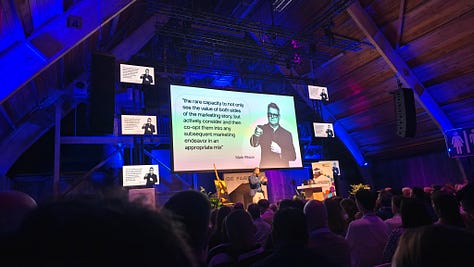
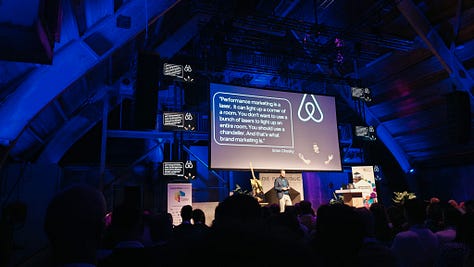
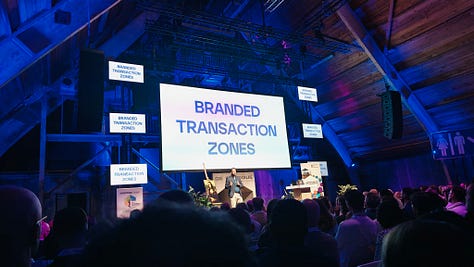
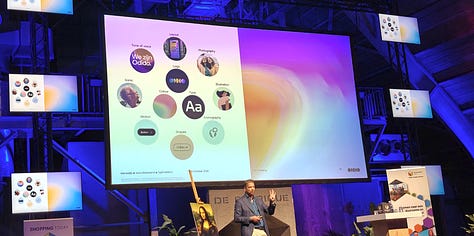
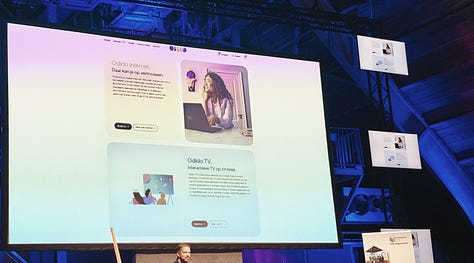
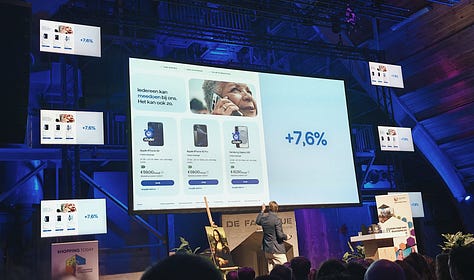
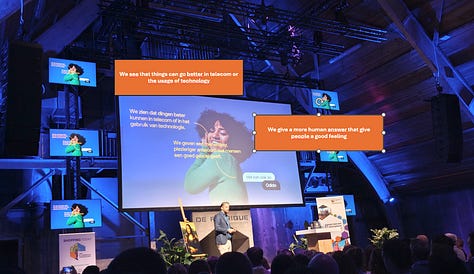
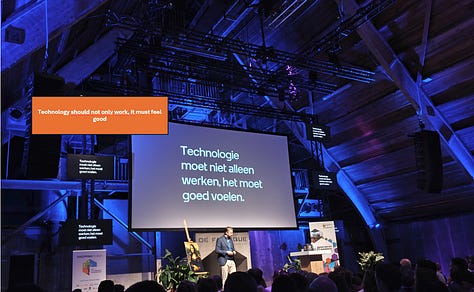
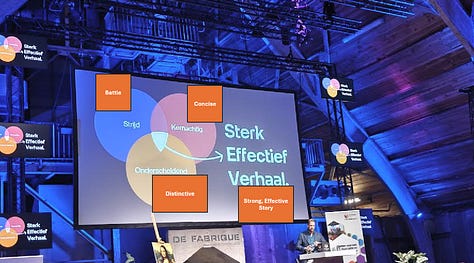
One of the keynotes was from “ODIDO” a Dutch Telco brand that does things a bit differently. The speaker came to tell us on how performance marketing & branding can go hand in hand.
I am not a big fan of “branding only” campaigns with not any follow up or CTA or connection with landingpages (still see that a lot), but I do believe in the combination. That’s why I was motivated after watching this keynote, it confirmed my thoughts.
The presenter started with the “Mona Lisa Effect”:
The Mona Lisa wasn’t a big attraction at first. In 1911 it was stolen, became global news, and when it returned people flocked to see it. The story turned a masterpiece into an icon. Same lesson for brands: story creates meaning and attention that performance alone can’t buy.
Then the presenter told us: You don’t win customers in a spreadsheet, but in people’s minds.
Takeouts:
Brand vs performance is a false choice. You need brand + performance, and you should see it in the metrics.
The presenter told a real, practical story: how Odido weaves brand through product pages and checkout, then measures results (≈ +7.6% conversion shown on their slide) They call it: from “brandless funnels” to “branded transaction zones”
Most sites drop the “story” the moment a user hits the webshop. Odido kept the brand alive inside the product experience (copy, visuals, tone on PDPs and offers).
Sometimes lower direct conversion is acceptable if f.e. there is a connection with retention.
The Odido brand: https://www.odido.nl/
🇳🇱 Shopping Today event (3) : Some random pictures

Many still talk about the classic sales funnel (AIDA or See–Think–Do), and it’s useful for planning or idiation, but running separate stage campaigns, first “See,” then months later “Think,” then “Do”, is not anymore of this time. With privacy changes and weaker tracking, granular retargeting is harder. So why not keep “performance branding” on in every stage, all the time? Think of the journey as a loop, not a line:
What changes in practice:
Always on creative: Adapt the same core idea for See/Think/Do/Care—don’t switch it off between stages.
Full-funnel formats: Use performance media with brand assets (distinctive visuals, memory hooks) and brand media with performance CTAs and landing pages.
Post-purchase: Keep using search, social, and email after the sale to drive repeat and referrals (loyalty/advocacy feeding new awareness).
Metrics beyond CPA: Track repeat rate, LTV, share of branded search, referral %, and time-to-repeat, not just CAC/ROAS.
Bottom line: Use AIDA/See–Think–Do to structure thinking, but execute like a loop, with performance branding running continuously. In a cookieless world, this is faster, simpler, and often delivers better growth than A/C-only bursts.
Intergamma on their AI process of data enhancements
Lot’s of text, had to translate it a bit ugly to keep it readable (sorry about that), but this slide, might help companies that are not yet so far as Intergamma in increasing the (product) data quality with AI.
I know from experience it is very difficult from suppliers to get good quality product data. Intergamma has the same problem and uses an AI chatbot to help suppliers provide data, but not only that they also embedded processes to keep the quality high.
Intergamma is the Dutch parent/franchise organization behind the DIY chains GAMMA (NL & BE) and KARWEI (NL) the largest DIY retailer/franchise group in the Benelux with ~400 stores (HQ in Leusden, NL; also Antwerp, BE).
🥷Key AI search success KPI’s
Wonderful slide from Aleyda again and this fit’s prefect in todays newsletter.
TL;DR: In AI search, success isn’t just clicks anymore, it’s how often and how well your brand appears in answers and what that visibility drives later.
What to track
Branding: Visibility/share of voice in AI answers, sentiment, citations/mentions.
Bridge metrics: Links earned and any traffic you do get.
Performance: Conversions, conversion rate, revenue, CAC, ROI.
Answer engines may not send traffic immediately, but repeated brand exposure in responses, shapes user preference and lifts downstream conversions. Optimize to be cited in answers, then connect that exposure to later-funnel metrics.
Details: https://x.com/aleyda/status/1974883636479660379/photo/1
📈When advertising shifts to prompts, what should advertisers do?
Great article on search engine journal that I share here. Makes sense to us digital marketers, I think but this article might be very useful in explaning what is happening to management or less digital savy people. There are so many opportunities, I really believe in that, but also you need to be more of a trailblazer to take advantage of it and that’s where this article comes in.
Users didn’t ditch Google; they simply stopped using it the way they did when keywords were king. Plus, we’re seeing new players emerge, and search itself has fragmented
Even more importantly, 53% of users say they plan to rely on AI tools for shopping going forward.
Why This Is An Opportunity, Not A Death Sentence
As I argued before, platforms aren’t killing keyword advertising; they’re evolving it. The advertisers winning now are leaning into the new levers:
The future isn’t about bidding on a query. It’s about supplying the AI with the best “raw ingredients” so you win the recommendation at the exact moment of decision.
Previous newsletter:
Checkout my previous newsletter, I think it was a good one:
Warm greetings, connect via: Alex Baar
Or checkout my archive of previous newsletters if you want to read more :


